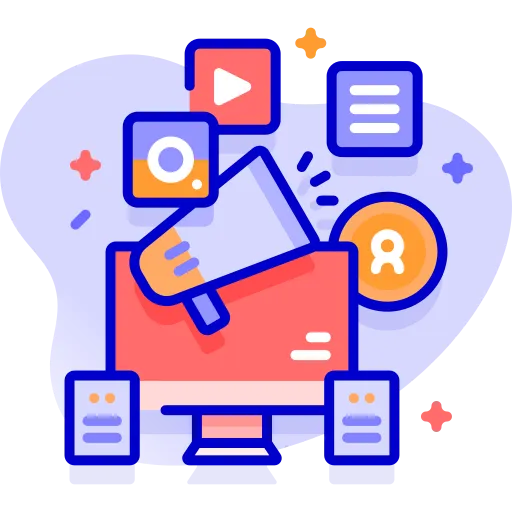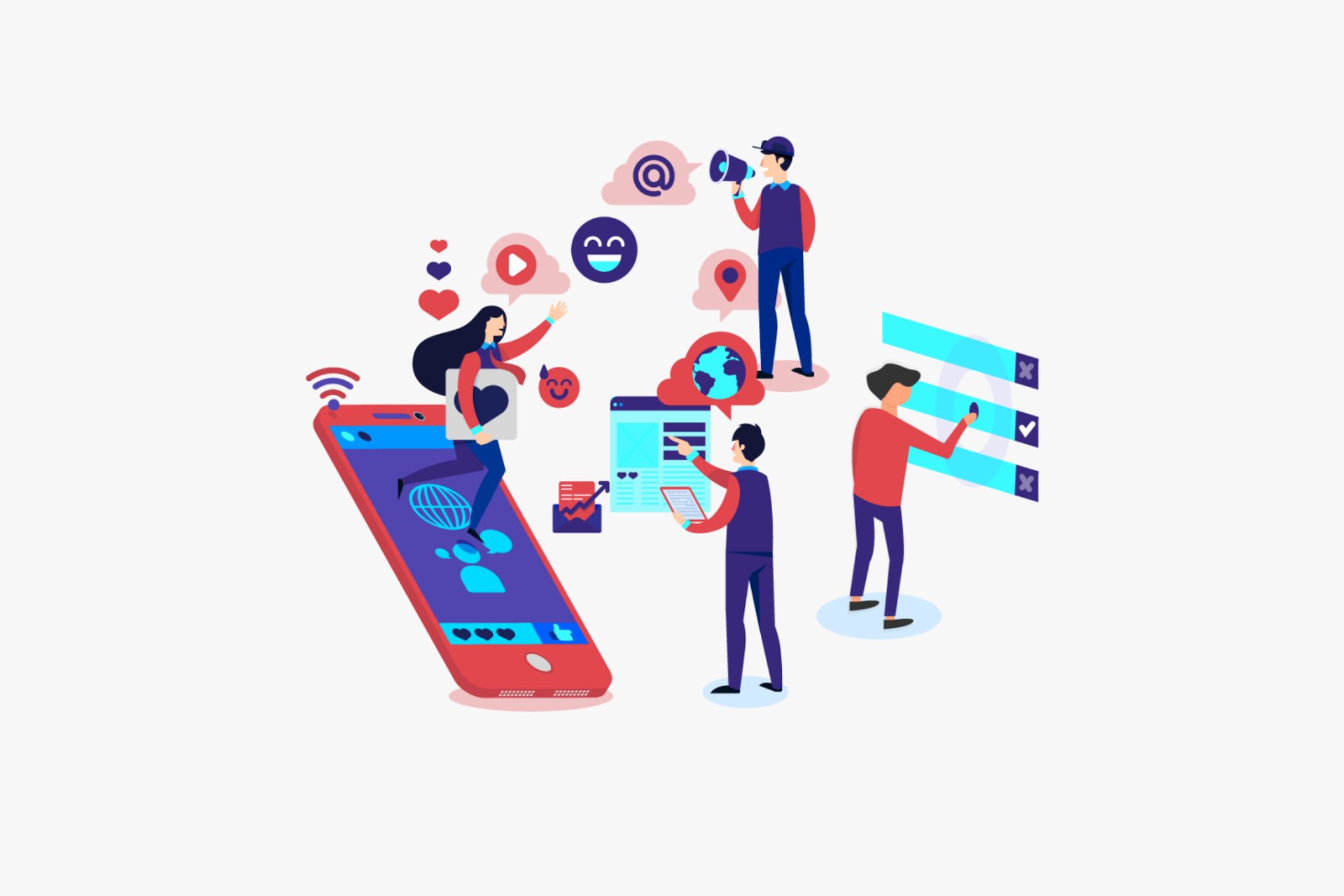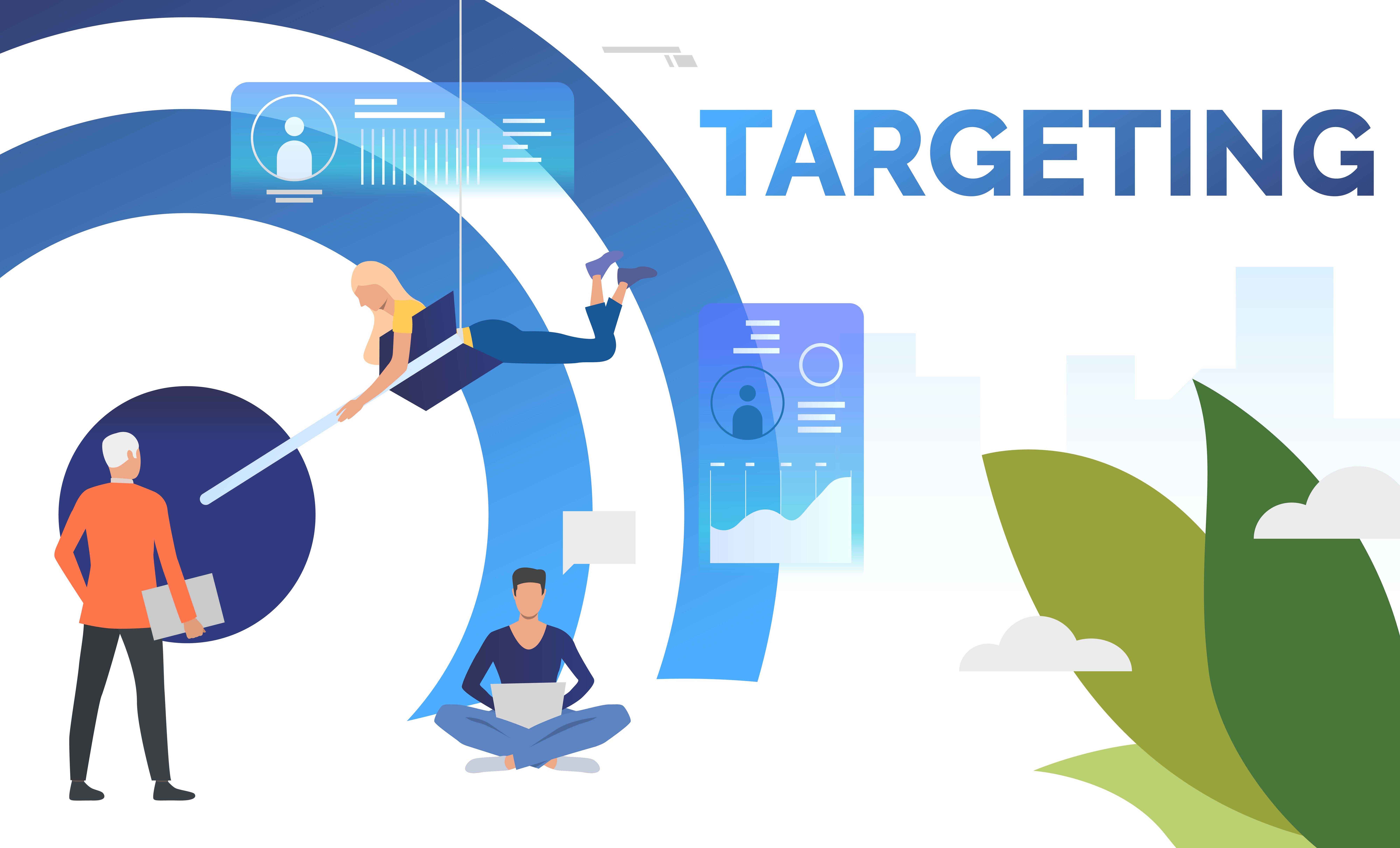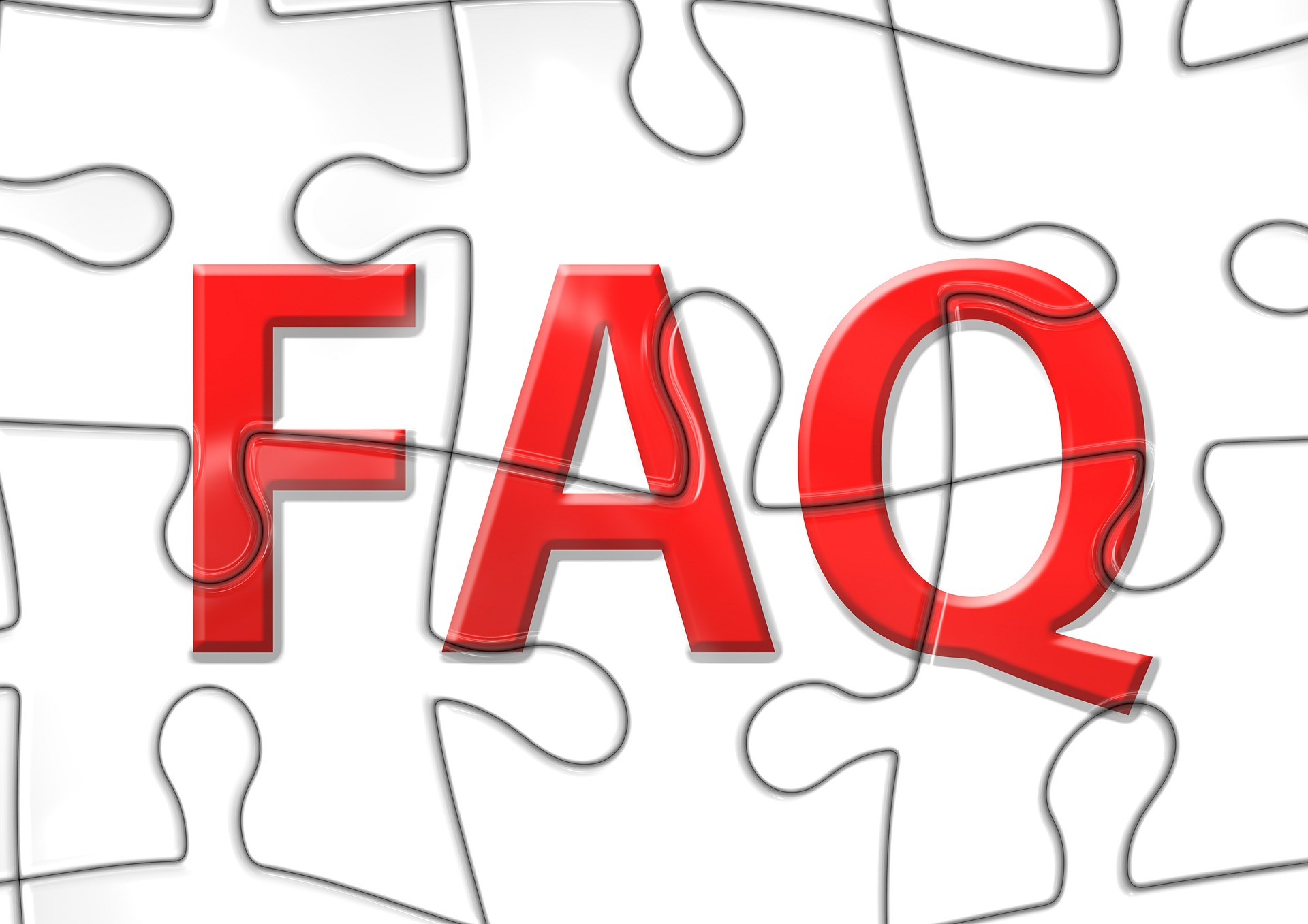
Unleash the Power of AI-Powered Content Generation:
Transform Your Business Today!
Grab Your Hands on Our Revolutionary Tool for FREE for Life - Exclusively for Busy Business Owners, Freelancers, and Entrepreneurs!
Be Creative. Deliver Results.
Are you tired of spending countless hours brainstorming, drafting, and revising content for your business? Do you wish you had a magic wand that could effortlessly transform your simple commands into captivating ads, social media content, SEO optimization, lead-gen strategies, video scripts, checklists, marketing frameworks, FAQs, and so much more? Your search ends here!

3K+
Member Active
1K+
Happy Clients
Unlock the Power of Our Benefits

Free for Life
Yes, you heard it right! Our AI-powered content generation tool is completely FREE for life, unlocking unprecedented possibilities for your business without any financial burden.
Generate Original, Copyright-Free Content
Avoid the hassle of legal issues and copyright infringements. Our AI-powered tool generates original, copyright-free content tailored to your specific requirements, ensuring every piece produced is legally and ethically sound.
Transform Simple Commands into Mesmerizing Content
Say goodbye to writer's block and mundane content production. With our tool, you can effortlessly convert your simple commands into captivating ads, social media content, SEO-optimized articles, lead-generation strategies, video scripts, checklists, marketing frameworks, FAQs, and much more.
Consistently High-Quality Output
Harness the power of artificial intelligence's superior content generation capabilities. Our tool delivers consistently high-quality output, surpassing human capabilities in terms of speed, accuracy, and creativity. Never compromise on the excellence of your content again!
Ready to revolutionize your content creation process and supercharge your business? Sign up now and unlock the unlimited potential of our AI-powered content generation tool, absolutely FREE for life!
Don't miss out on this exclusive opportunity – transform your business and leave your competitors in the dust.
Here Is What You Can Do:

Content Marketing
You can create all kinds of marketing copy you can whip up today.

Social Media Marketing
You can create a wide range of engaging and unique content for various social media platforms.

Paid Ads
You can craft captivating and effective ads for your products or services, saving you from the usual hassle and tedium of impactful ads.

Search Engine Optimization
You can generate SEO-optimized content that attracts organic traffic, helping your website rank on Google, Bing, and other search engines.

Sales Letter
You can write compelling and high-converting sales copy that captures your visitors' attention and encourages them to take desired actions.

Video Marketing
This tool will simplify and expedite your video content creation process, helping you produce high-converting AI video scripts.
And there's more...
Explore Our Robust Features
User-Friendly Interface: Our tool boasts a super-user-friendly interface, making it effortless for even the most technologically challenged individuals to generate professional-grade content with a few simple clicks.
AI-Backed Content Optimization: Leverage the latest advancements in artificial intelligence to optimize your content for maximum impact. Our tool ensures your content is tailored to your target audience, industry trends, and search engine requirements, making it a powerful asset in your marketing arsenal.
Compatibility with Multiple Platforms: Seamlessly integrate our AI-powered tool with your preferred platforms, including social media channels, web development tools, and marketing automation software. Unlock infinite possibilities for content generation and distribution across various platforms, reaching a wider audience with minimal effort.
Experience The Transformation For Your Business
Everything You're Getting
FREE
100 Credits One-time (NEVER EXPIRE)
Ultimate Dashboard
Automated AI Content Creation
AI Content Improvement
High-Converting AI Video Scripts
AI Ad Copy Creation
Engaging AI Social Media Posts
AI Marketing Frameworks Production
AI Lead Magnet Creation
AI Search Engine Optimization
Step-by-Step Training
Lifetime Free Updates
no credit card required
Frequently Asked Questions
Is this AI-powered content generation tool really free for life?
Absolutely! We believe in empowering businesses, freelancers, and entrepreneurs, which is why our tool is available to you at no cost, forever. Say goodbye to subscription fees and hello to unlimited possibilities!
How do the credits work?
Each user account gets 100 credits to use for life. They never expire. Each time you click "Generate" to get copy created, you use 1 credit. You are NOT charged per word or characters.
Each copy = 1 credit
Can I customize the generated content to fit my brand's unique voice?
Of course! Our content generation tool is built to adapt to your brand's voice, ensuring that every piece generated reflects your unique identity. You can effortlessly customize the generated content to align with your brand's tone, style, and values.
How can AI generate copyright-free content?
Our AI-powered tool doesn't rely on copying or plagiarizing existing content. Instead, it utilizes advanced algorithms and deep learning techniques to generate original content from scratch, saving you the hassle of copyright issues.
What sets your AI-powered tool apart from other content generation options available in the market?
Unlike other content generation tools, our AI-powered tool is specifically designed for busy business owners, freelancers, and entrepreneurs. We understand your need for efficiency, user-friendliness, and stunning results. Our tool not only offers a seamless and intuitive user experience but also creates content that goes beyond the ordinary. With its AI-driven capabilities, it consistently generates content that stands out, boosts SEO optimization, and drives lead generation. Say goodbye to generic content and hello to content that truly reflects your brand's personality.
Is this software suitable for individuals with no technical background?
Absolutely! Our user-friendly interface is designed to cater to busy business owners, freelancers, and entrepreneurs with no technical expertise required.
What kind of content can I generate using this tool?
Our AI-powered software is incredibly versatile. You can create captivating ads that drive conversions, compelling social media posts that engage your audience, SEO-optimized content that boosts your website's visibility, and effective lead generation strategies that help grow your business. The possibilities are endless, and our tool ensures that you never run out of creative and impactful content.
Are there any limitations to the free-for-life offering of the AI-powered content Generation tool?
While we provide our AI-powered tool for free for life, there might be certain premium features or additional services that could enhance the user experience. These additional features may come at a minimal cost to cover advanced functionalities or personalized support options. However, we are committed to continually improving our free version to meet the evolving needs of our users in your industry.
How does the AI-powered tool ensure high-quality content generation?
Our AI algorithm is continuously trained on vast amounts of small business data, ensuring that the generated content is relevant, engaging, and tailored specifically for the target audience. This guarantees that our users receive top-notch content that resonates with their clients and helps them achieve their business goals.
How does your AI-powered tool transform simple commands into mesmerizing content?
Our AI-powered tool is a game-changer in the world of content generation. With its highly advanced algorithms and natural language processing capabilities, it comprehends your simple commands and transforms them into captivating content that captivates your target audience. Whether it's ads that stop people in their tracks or social media content that sparks engagement, our tool turns your instructions into powerful content that tells your brand's unique story.
How can this free AI-powered tool benefit busy business owners, freelancers, and entrepreneurs?
We know that your time is valuable and scarce. By offering our AI-powered tool for free, we eliminate the financial burden of investing in expensive content generation tools. With our tool, you can save hours of your precious time by effortlessly transforming your simple commands into captivating content. The result? You can focus on what truly matters – growing your business, securing new clients, and reaching your entrepreneurial goals. Our powerful AI-driven software is your secret weapon for content creation success without the heavy price tag.
Experts Team
Specialist Team

Jane Doe
Founder

John Doe
Founder

Jane Doe
Founder

Jane Doe
Founder
Blog & Articles

Bringing the Dead Back to Life: How to Effectively Reactivate Customers
Introduction
Every business has a customer base, but not every business knows how to keep those customers engaged and coming back for more. Customer reactivation is the process of reigniting the interest of lapsed or inactive customers and encouraging them to make a purchase again. In this article, we’ll explore the benefits of customer reactivation and provide you with practical tips and strategies to get started.
Importance of Customer Reactivation
Reactivation of customers holds paramount importance in the business world. When customers disengage from a company, businesses strive to bring them back through customer reactivation. There are various reasons why customers discontinue business with a company, including lack of interest, substandard customer experience, or changes in personal circumstances. Nonetheless, inactive customers are a substantial opportunity for businesses to boost revenue and enhance customer retention.
Reactivation of customers is important because it is much more cost-effective to retain existing customers than to acquire new ones. Reactivating customers can lead to increased customer loyalty and higher lifetime value. Besides, by understanding why customers stopped doing business with a company, organizations can enhance their products, services, and customer experiences. This can result in a more gratified customer base, ultimately leading to more successful business operations.
Furthermore, customer reactivation can aid in filling the gap left by lost customers, which can prove to be highly advantageous, especially for small and medium-sized businesses. These businesses may not have the resources to continuously acquire new customers at the same rate. Therefore, reactivating customers can be an ideal strategy for filling this void.
In summary, customer reactivation is a pivotal aspect of any business strategy. It can lead to significant financial and operational benefits for companies of all sizes. By re-engaging with inactive customers, businesses can increase customer loyalty, boost revenue, and enhance customer retention, ultimately leading to the success of the company.

Identifying the Characteristics of Inactive Customers
As a business owner, you know that customer retention is key to success. However, despite your best efforts, some customers inevitably become inactive. It's easy to feel discouraged when this happens, but don't give up hope just yet. By understanding the characteristics of inactive customers, you can take steps to reactivate them and keep your business thriving.
The Importance of Identifying Inactive Customers
Before we dive into the characteristics of inactive customers, let's first discuss why it's important to identify them. When you understand the common traits of inactive customers, you can tailor your reactivation efforts to better target them. This can lead to more successful outcomes and save you time and resources in the long run.
Characteristics of Inactive Customers
Now, let's explore some of the most common characteristics of inactive customers.
Length of Inactivity
One important factor to consider is the length of time a customer has been inactive. Generally speaking, the longer a customer has been inactive, the harder it is to reactivate them. However, this isn't always the case. Some customers may have a strong attachment to your brand and will be willing to return even after a long period of inactivity.
Purchase History
Another key characteristic to consider is the customer's purchase history. Customers who have a history of making frequent or large purchases are typically more valuable to your business. As a result, it may be worth investing more effort in trying to reactivate them.
Demographics
Certain demographic groups may be more likely to become inactive customers. For example, customers in certain age groups, income levels, or geographic locations may be more prone to disengagement. By analyzing customer data and identifying these trends, you can adjust your reactivation efforts accordingly.
Feedback
Finally, customers who have provided feedback or complaints in the past may be more likely to become inactive if their issues were not resolved. If a customer feels unheard or unappreciated, they may choose to take their business elsewhere.
Tools for Identifying Inactive Customers
Now that we've discussed the characteristics of inactive customers, let's explore how you can identify them. There are a variety of tools and techniques you can use, such as:
Customer data analytics: By analyzing customer data, you can identify patterns and trends that may indicate disengagement.
Surveys: Conducting surveys can help you gather feedback from customers and better understand their needs and preferences.
Customer feedback: Encouraging customers to provide feedback can give you valuable insights into their experiences with your business.
Tailoring Your Reactivation Efforts
Once you've identified the characteristics of your inactive customers, you can tailor your reactivation efforts to better target them. For example, you may want to send targeted email campaigns to customers who have been inactive for a certain length of time or offer special promotions to customers with a history of large purchases.
In summary, understanding the characteristics of inactive customers is crucial to successfully reactivating them. By analyzing customer data, gathering feedback, and tailoring your reactivation efforts, you can improve your chances of success and keep your business thriving.
Analyzing the Reasons for Customer Inactivity
Customer inactivity analysis is a vital step towards customer reactivation, necessitating a thorough understanding of the reasons for their disengagement. The identification of the underlying issues facilitates companies' implementation of appropriate measures that increase the likelihood of successful re-engagement.
Multiple factors contribute to customer inactivity, including poor customer service, insufficient perceived value, competition, personal circumstances, and marketing fatigue. Unfavorable customer service experiences often result in their disengagement from a company. Customers are also more likely to discontinue business dealings if they fail to discern the value of continued association with a company. The emergence of better products or services from competitors is another reason for customers' inactivity.
Furthermore, changes in personal circumstances, such as relocation or job changes, may result in customer disengagement. The inundation of marketing messages could also cause marketing fatigue, leading to customer disengagement.
Companies can employ various tools, including surveys, feedback forms, customer interviews, and customer data analytics, to conduct customer research and analyze the reasons for their inactivity. By gathering data from inactive and active customers and comparing them, companies can gain insights into the factors causing customer inactivity. Analysis of the reasons for customer inactivity allows companies to identify and address underlying issues, improve their products, services, and customer experiences. This results in a more contented customer base and ultimately more successful businesses.
Developing a Customer Segmentation Strategy
Developing a customer segmentation strategy is a vital stride towards successful customer reactivation. Customer segmentation is the method of bifurcating a customer base into smaller groups of customers with analogous characteristics. By segmenting customers, businesses can personalize their reactivation efforts and enhance the likelihood of triumph. The diversity of segmentation approaches includes demographics, purchase history, behavior, and value-based segmentation. A combination of these techniques can also be employed to create more precise segments.
Upon identification of these segments, a company can customize its reactivation efforts for each segment accordingly. This entails proposing distinct incentives or promotions or utilizing diverse communication channels to reach them. A comprehensive customer segmentation strategy empowers businesses to precisely target their reactivation efforts, leading to greater success. By comprehending the needs and characteristics of different customer segments, businesses can create more effective reactivation campaigns, resulting in higher customer retention and revenue.
In summary, a customer segmentation strategy is indispensable for businesses seeking to target their reactivation efforts and increase the probability of success. It involves dividing the customer base into smaller, more distinct segments based on a range of characteristics. Once these segments are identified, businesses can develop tailored reactivation campaigns for each segment, ultimately resulting in improved customer retention and revenue.
The Importance of Effective Communication
Effective communication plays a pivotal role in reactivating customers who have gone inactive. In order to re-engage them and bring them back to the business, it is imperative to communicate with these customers in a personalized, relevant, and captivating manner.
Successful communication has the power to accomplish the following:
· Build a strong bond of trust and credibility with customers.
· Identify and address any issues or concerns that may have caused customer inactivity.
· Emphasize the value and advantages of doing business with the company.
· Motivate customers to take action, such as purchasing a product or subscribing to a service.
Various channels can be utilized by a company to communicate with its inactive customers, including:
· Email: This medium is a cost-effective way to reach a substantial number of customers. Personalized and targeted emails can be sent to inactive customers to remind them of the company's offerings and services and encourage them to come back.
· Social Media: Social media platforms can be employed to contact inactive customers via targeted ads, social media posts, or direct messaging.
· SMS: Personalized and direct communication, reminders, or special deals can be sent to customers via SMS.
· Phone Calls: Personal phone calls can be made to customers to establish a direct connection with them.
It is also crucial to bear in mind that creating a personalized message, adopting a tone that aligns with the company's brand, and being attentive to the customer's preferences regarding communication channels, can dramatically enhance the chances of reactivating customers.
In a nutshell, effective communication is an indispensable element for customer reactivation. By communicating with inactive customers in a customized, pertinent, and fascinating way, businesses can re-engage them and bring them back to the business, resulting in increased customer retention and revenue.

Creating a Reactivation Campaign Plan
Creating a strategic reactivation plan is a critical juncture in the process of customer re-engagement. A masterfully crafted reactivation scheme has the potential to effectively entice inactive customers and bring them back to the business fold.
In order to generate an effective reactivation plan, it is imperative to consider the following steps:
Clearly define the objectives: Set specific targets for the campaign such as enhancing revenue, improving customer loyalty, or addressing particular issues that led to customer inactivity.
Identify the target audience: Determine the exact segments of inactive customers that the campaign will focus on. This can be achieved by using segmentation strategies.
Craft the message: Develop a clear and convincing message that resonates with the needs and concerns of the target audience, highlights the value proposition of the business, and encourages customers to take action.
Choose the right channels: Select communication channels that are most effective for reaching the target audience. This can encompass email, social media, SMS, or phone calls.
Create compelling incentives: Develop incentives that will be offered to customers as part of the campaign. These can include discounts, freebies, or exclusive offers.
Measure and track progress: Establish a system for measuring and monitoring the success of the campaign. This can involve setting goals and KPIs, analyzing data, and making modifications to the campaign as required.
Continuous improvement: Continuously evaluate and refine the campaign, making adjustments as needed to achieve the desired results.
The creation of a well-crafted reactivation plan is crucial to successfully re-engaging inactive customers and reaping the rewards. By setting clear objectives, identifying the target audience, crafting the message, choosing the right channels, creating compelling incentives, measuring and tracking progress, and continuously refining the campaign, businesses can enhance their chances of success and ultimately improve customer loyalty and revenue.
Now is the time to take charge of your reactivation campaign and secure the future success of your business.

Using Email, Social Media, and Other Channels for Outreach
Reaching out to customers who have gone silent is crucial for any business that wants to keep them coming back for more. But how do you go about doing it? The answer lies in using email, social media, and other channels for outreach.
Email is an inexpensive way to reach out to a large number of customers all at once. It allows businesses to send personalized and targeted messages to inactive customers, reminding them of the great products or services they offer. And if that's not enough, businesses can also set up automated drip campaigns triggered by certain actions or inactivity.
Social media platforms like Facebook, Instagram, and LinkedIn provide a great opportunity to reach out to inactive customers through targeted ads, social media posts, or direct messaging. By targeting specific audiences based on demographics, interests, and behaviors, businesses can make sure that their messages are getting in front of the right people.
But why stop there? SMS can be used to send personalized and direct communication to customers, reminding them of upcoming deals or events. And phone calls can be used to reach out to high-value customers or those who have provided feedback in the past.
Of course, it's important to be mindful of the customer's preferences when using multiple channels for outreach. You don't want to bombard them with too many messages or use a channel they don't like. That's why it's crucial to ensure that the message is consistent across all channels and that the customer feels valued and appreciated.
In summary, by using multiple channels for outreach, businesses can increase their chances of re-engaging inactive customers and bringing them back to the business. So, get out there and start reaching out to those customers today!
Personalizing the Message for Maximum Impact
Customizing your message is a critical element of reactivating customers, as it can significantly enhance communication's effectiveness and ultimately boost the odds of reigniting the interest of inactive customers.
There are various ways to personalize your message, including addressing your customers by their name. By doing so, you can make your message feel more personal, which can boost the chances of your customer opening and reading your message.
Furthermore, tailoring your message to your customers' interests and preferences is an excellent way to make it more engaging and relevant to them. By understanding their likes and dislikes, businesses can create a message that resonates with their customers, increasing their chances of responding to it.
It's also important to consider the specific issues or concerns that caused a customer to become inactive in the first place. By addressing these issues directly in your message, you demonstrate that you understand their situation and are willing to work with them to find a solution.
Incentives and special deals can also be tailored to a customer's past purchase history or interests. This can create a sense of exclusivity and encourage customers to engage with your business again.
However, it's crucial to strike a balance between personalization and relevance. You don't want to overdo it and make your message seem artificial or insincere.
In summary, personalizing your message is a crucial component of customer reactivation. By understanding your customers' interests, addressing their concerns, and offering personalized incentives, you can increase the effectiveness of your communication and improve the odds of reigniting their interest in your business.
The Role of Incentives in Customer Reactivation
In the world of business, keeping customers engaged and interested is crucial. But what happens when customers become inactive? This is where incentives come in, and they can make all the difference.
Incentives are like a breath of fresh air for inactive customers. They can be just the thing that encourages them to come back and reconnect with a company. The power of incentives lies in their ability to entice customers to make a purchase or sign up for a service. They can be the missing piece that turns a one-time customer into a loyal, repeat customer.
There are several types of incentives that can be used to achieve this. Discounts, freebies, exclusive offers, and loyalty rewards are all examples of incentives that can help re-engage customers. Discounts can be especially powerful, as they provide a sense of urgency and can help drive sales. Freebies can also work wonders, as who doesn't love getting something for free? Exclusive offers can make customers feel special and valued, and loyalty rewards can keep them coming back for more.
It's important to remember that the incentive offered should be relevant and appealing to the customer. And it should be worth their effort to redeem it. No one wants to go through a long, complicated process just to receive a small discount. A valuable incentive will make customers feel appreciated and valued, and it will keep them coming back for more.
To increase the chances of success, incentives can be combined with other strategies such as personalization, effective communication, and segmentation. This will help create a tailored approach that resonates with the customer and makes them feel valued.
In summary, incentives are a powerful tool for re-engaging inactive customers. By offering discounts, freebies, exclusive offers, and loyalty rewards, businesses can show customers that they value their continued patronage. This can lead to increased customer retention and revenue for the business. So, don't hesitate to offer incentives to your inactive customers. They just might be the boost your business needs to thrive.
Types of Incentives that Work Best
There's nothing more disheartening than seeing once-loyal customers fade away and become inactive. But fear not, because there are several types of incentives that can work wonders for reactivating customers and bringing them back into the fold. The key is to tailor your incentives to the specific characteristics of your inactive customers and the goals of your campaign.
One effective incentive is monetary rewards, such as discounts or coupons, which can be especially appealing to customers who are price-sensitive or who have recently made a purchase. Another powerful option is to offer free trials or product samples, which can introduce customers to new products or services and work particularly well for those who have shown interest in a specific offering in the past.
For high-value customers or those who have been inactive for a while, offering exclusive access to products, services, or events, or providing VIP treatment like priority customer service, can be a highly effective incentive. Additionally, loyalty rewards or points can be a great way to incentivize repeat purchases from customers who have previously made them or who are likely to do so in the future.
It's crucial to keep in mind that the incentive you choose should be both relevant and appealing to the customer, and the value of the incentive should be commensurate with the effort required by the customer to redeem it. When combined with personalization, effective communication, and segmentation, incentives can be even more powerful in boosting your customer reactivation efforts.
In short, there's no one-size-fits-all approach when it comes to reactivating inactive customers. The key is to choose incentives that are tailored to your customers and campaign goals. So go ahead and show your customers how much you value them by offering them the perfect incentive to bring them back into the fold.
How to Structure and Promote Special Deals
Do you want to win back your customers and increase your revenue? Then listen up, because structuring and promoting special deals is the way to go! It's a proven strategy for customer reactivation that can help you achieve your business goals.
But how do you go about it? It's simple, just follow these steps:
Firstly, determine the goals of the special deal. What do you want to achieve? Do you want to increase revenue, improve customer retention or address specific issues that led to customer inactivity? Identifying your goals will help you create a focused and effective special deal.
Next, identify your target audience. Who are your inactive customers? Use customer segmentation strategies to pinpoint specific segments and create a special deal that is tailored to them. It could be a discount, free product or service, or exclusive access.
Now it's time to develop the special deal. Make sure the value of the special deal is proportional to the effort required by the customer to redeem it. Nobody likes to jump through hoops for a reward that's not worth it.
Promote special deals across multiple channels. Use email, social media, SMS, phone calls, and even in-store promotions. Make sure the message is consistent across all channels and not overwhelming for the customer.
Measure and track the success of the special deal. Set up goals and KPIs, analyze data, and make adjustments to the special deal as needed. Continuously monitor and evaluate special deals to improve the results.
Now, let's talk about the various channels you can use to promote your special deals. Email, social media, SMS, website, in-store, and personalized communication are all great options. Pick the ones that work best for your business and target audience.
When promoting your special deals, timing and frequency are crucial. Strike a balance between promoting them enough to be noticed, but not so frequently that it becomes overwhelming for the customer.
In summary, structuring and promoting special deals is an effective way to reactivate inactive customers and ultimately improve customer retention and revenue. So, get creative and start promoting your special deals today!

Setting Goals and KPIs for Your Reactivation Campaign
As a business owner, you know the importance of keeping your customers engaged and satisfied. However, sometimes customers may become inactive and lose interest in your products or services. Don't worry, though, because a reactivation campaign can help to win them back!
But, where do you start? Setting goals and KPIs (Key Performance Indicators) is a crucial step in the process of reactivating your customers. By doing so, you will have a clear and measurable framework for tracking progress and evaluating the success of your campaign.
Firstly, revenue goals should be set to track the financial success of your campaign, such as an increase in sales or revenue. Secondly, retention goals should be set to track the success of your campaign in terms of customer retention, such as an increase in the number of repeat customers or a decrease in the number of inactive customers.
Engagement goals are also important, as they track the success of your campaign in terms of customer engagement. This could be an increase in website traffic or social media engagement. Additionally, feedback goals are essential, as they track customer feedback, such as an increase in the number of positive reviews or a decrease in the number of complaints.
Identifying the right metrics is crucial too. Metrics such as open rates, click-through rates, conversion rates, and customer lifetime value should be tracked to ensure that you are on the right track.
It's crucial to ensure that your goals and KPIs are specific, measurable, attainable, relevant, and time-bound (SMART). Moreover, they should align with the overall objectives and strategy of the campaign.
In conclusion, setting goals and KPIs for your reactivation campaign is a vital step in the process of customer reactivation. By setting clear and measurable goals and KPIs, you can track progress and evaluate the success of your campaign, which ultimately leads to increased customer retention and revenue.
Analyzing Data and Tracking Progress
Understanding and keeping track of customer behavior is a vital aspect of reactivating them. Collecting and analyzing data can provide businesses with valuable insights into the effectiveness of their reactivation campaigns and enable them to make necessary adjustments to enhance the results.
To effectively analyze data and monitor progress, there are several crucial steps to follow. Firstly, it's essential to collect data on various customer behavior aspects, including their purchase history, website traffic, social media engagement, and feedback.
Next, it's important to identify key metrics, such as open rates, click-through rates, conversion rates, and customer lifetime value, to track the campaign's success. Analyzing the collected data can offer valuable insights into customer behavior and the reactivation campaign's effectiveness.
Tracking progress against goals and Key Performance Indicators (KPIs) set for the campaign is crucial to determine if the campaign is on the right track. Based on the insights gained from data analysis, businesses must make necessary adjustments to their reactivation efforts to enhance the results.
Continuous monitoring and evaluation of the campaign's progress are necessary to maintain effective reactivation efforts. The use of data visualization and reporting tools can help present the data effectively and track progress over time.
In summary, analyzing data and tracking progress is a crucial aspect of customer reactivation that businesses cannot ignore. By collecting and analyzing data, businesses can gain valuable insights into customer behavior and optimize their campaigns for better performance, leading to increased customer retention and revenue.

Rekindling the Relationship and Adjusting Your Strategy Accordingly
Rekindling the relationship with inactive customers is crucial for any business, but it's not an easy task. It requires a constant effort to monitor and evaluate the progress of the reactivation campaign to identify areas that need improvement. This is where adjusting your strategy comes into play.
To give your customer reactivation strategy a boost, you must consider the following steps:
Step 1: Continuously monitor and evaluate the progress of the campaign
Monitoring and evaluating your reactivation campaign's progress through data and metrics are essential to track your progress against goals and Key Performance Indicators (KPIs) set for the campaign. This helps you keep track of what is working and what's not.
Step 2: Identify areas for improvement
By identifying areas that are underperforming, such as low open rates for email campaigns or low conversion rates for special deals, you can focus on improving those areas.
Step 3: Analyze the root cause
Once you've identified the areas that need improvement, it's crucial to analyze the root cause of the problem. Is the email subject line not engaging enough, or is the special deal not attractive enough? This analysis helps you identify the underlying issues that need to be addressed.
Step 4: Make adjustments
Based on the insights gained from the analysis, make adjustments to your reactivation strategy to improve the results. This might involve tweaking your email subject lines or revamping your special deals to make them more appealing.
Step 5: Test and iterate
Testing and iterating your reactivation strategy is an important step. Test the adjustments you've made to your strategy, and iterate until you achieve the desired results. This helps you refine your approach and optimize your strategy.
It's crucial to keep in mind that customer reactivation is an ongoing process that requires continuous monitoring and adjustments. Small adjustments can lead to significant results.
In conclusion, by identifying areas for improvement and adjusting your strategy accordingly, you can optimize your customer reactivation campaign, increase engagement, and rekindle relationships with inactive customers.
Encouraging Readers to Implement the Strategies Discussed
Are you struggling to keep your customers engaged with your business? Do you have a growing list of inactive customers who seem to have disappeared from your radar? Well, don't worry! With the right strategies, you can re-engage those customers and bring them back to your business.
We understand that losing customers can be disheartening, but there is still hope. By implementing the strategies discussed in this article, you can increase customer retention and revenue. It's time to take action and start implementing these strategies in your own business.
The first step is to identify the characteristics of your inactive customers and analyze the reasons for their inactivity. This will help you develop a customer segmentation strategy and create a reactivation campaign plan that includes clear objectives, effective communication, and incentives. Make sure to personalize your message and use multiple channels for outreach to increase the chances of re-engaging your inactive customers.
But it doesn't end there. Setting goals and KPIs, analyzing data, and tracking progress are also crucial steps in the process. You need to continuously monitor and evaluate the campaign and make adjustments as needed to improve the results.
Remember, customer reactivation is not a one-time task, it's a continuous process that requires monitoring and adjustments. But with perseverance and dedication, you can achieve significant improvements in customer retention and revenue.

Key Statistics that Demonstrate the Benefits of Customer Reactivation Campaigns
It's 6 to 7 times more expensive to acquire a new customer than it is to retain an existing customer.
A 5% increase in customer retention can increase company revenue by 25-95%.
Repeat customers spend 31% more than new customers. Retained customers buy more often and spend more than newer customers.
Satisfied, loyal customers are more likely to sing a company's praises and refer their friends and family — bringing in new customers, free of charge. Repeat customers refer 50% more people.
Loyal customers are gold: they are worth 10x more than the value of their first purchase.
70% of business owners say customer retention is cheaper than acquisition.
The success rate of selling to a repeat customer ranges from 60% to 70%. Meanwhile, the chances of converting a new customer range between just 5% and 20%.
For every 100 leads we generate you're getting 60%-80% sales opportunities instead of just 2%-10%.
80% of profits come from 20% of your customers.
That’s where a customer reactivation campaign can help, and it’s why customer reactivation is one of the highest ROI opportunities in your sales and marketing strategy.
Examples of Top Brands using Customer Reactivation Campaigns
There are several case studies of businesses successfully using customer reactivation campaigns. Here are a few examples:
Spotify: Spotify uses customer reactivation campaigns to entice inactive users to return to their platform. By offering personalized playlists and special discounts, Spotify has been able to reactivate millions of inactive users.
Sephora: Sephora uses customer reactivation campaigns to encourage their customers to purchase again. By offering special promotions and discounts to customers who haven't purchased in a while, Sephora has been able to increase their sales and reactivate inactive customers.
Uber: Uber uses customer reactivation campaigns to bring back riders who haven't used their service in a while. By offering special promotions and personalized discounts, Uber has been able to reactivate millions of inactive riders.
Airbnb: Airbnb uses customer reactivation campaigns to entice inactive hosts to start renting their homes again. By offering special incentives and personalized recommendations, Airbnb has been able to reactivate thousands of inactive hosts.
American Express: American Express uses customer reactivation campaigns to encourage inactive cardholders to start using their cards again. By offering personalized promotions and incentives, American Express has been able to reactivate millions of inactive cardholders.
These are just a few examples of businesses successfully using customer reactivation campaigns. By targeting inactive customers with personalized incentives and promotions, businesses can reactivate customers and increase their sales.
Closing Thoughts
In conclusion, customer reactivation is the art of reigniting the passion in inactive customers and reigniting their interest in a business. It's a crucial technique for businesses looking to increase their revenue and retain their customers.
The heart and soul of customer reactivation include several key takeaways:
Understanding the inactive customers' behaviors and exploring the reasons for their inactivity.
Creating a customer segmentation strategy to target specific groups of inactive customers.
Crafting a compelling reactivation campaign plan that includes clear objectives, persuasive messaging, and enticing incentives.
Customizing the message to increase its effectiveness and make customers feel valued.
Utilizing a variety of communication channels like email, social media, SMS, and phone calls to reach out to inactive customers.
Setting measurable goals and KPIs for the campaign to track progress and evaluate success.
Scrutinizing data and tracking progress to identify areas for improvement and adjust the strategy accordingly.
Constantly monitoring and evaluating the campaign to make necessary adjustments to improve results.
By incorporating these key takeaways, businesses can efficiently and effectively re-engage inactive customers and make them feel like a valued part of their community. This results in increased customer retention and a significant boost in revenue, which is every business's ultimate goal.
Remember, customer reactivation is an art that requires patience, persistence, and a deep understanding of customers' needs and wants. So, let's all strive to make our customers feel heard, valued, and appreciated by following these essential takeaways.

FAQs
What is customer reactivation?
Customer reactivation is the process of reigniting the interest of lapsed or inactive customers and encouraging them to make a purchase again. It involves identifying inactive customers and creating personalized campaigns to address their specific needs and concerns.Why is customer reactivation important for businesses?
Customer reactivation is important for businesses because it is much more cost-effective to retain existing customers than to acquire new ones. Reactivating customers can lead to increased customer loyalty and higher lifetime value. Furthermore, by understanding why customers stopped doing business with a company, organizations can enhance their products, services, and customer experiences, resulting in a more satisfied customer base and ultimately leading to more successful business operations.What are the benefits of customer reactivation?
The benefits of customer reactivation include increased customer loyalty, higher lifetime value, improved products, services, and customer experiences, and filling the gap left by lost customers. Reactivating customers can lead to significant financial and operational benefits for companies of all sizes.How can customer reactivation lead to increased revenue?
Customer reactivation can lead to increased revenue by retaining existing customers and increasing their lifetime value. Reactivating customers can also fill the gap left by lost customers, which can prove to be highly advantageous, especially for small and medium-sized businesses that may not have the resources to continuously acquire new customers at the same rate.How can customer reactivation improve customer loyalty?
Customer reactivation can improve customer loyalty by showing customers that a business values their patronage and is committed to addressing their needs and concerns. By creating personalized reactivation campaigns that address the specific reasons why customers became inactive, businesses can show that they are dedicated to improving the customer experience and retaining their patronage.What are the strategies for customer reactivation?
The strategies for customer reactivation include identifying inactive customers, creating personalized reactivation campaigns, improving customer experience, and monitoring and tracking results. Businesses can identify inactive customers by defining what constitutes inactivity and analyzing customer behavior. Personalized reactivation campaigns can be created by determining the right message and channel, offering incentives, and implementing a sense of urgency. Improving customer experience involves addressing previous issues and creating a seamless experience. Results can be monitored and tracked by tracking customer engagement and analyzing campaign performance.How do you identify inactive customers?
Inactive customers can be identified by defining what constitutes inactivity and analyzing customer behavior. For example, a customer who has not made a purchase in the last 3 months may be considered inactive. Analyzing customer behavior may involve looking at purchase history, engagement with marketing materials, and other relevant data.How can you create personalized reactivation campaigns?
Personalized reactivation campaigns can be created by determining the right message and channel, offering incentives, and implementing a sense of urgency. The message should address the specific reasons why a customer became inactive and offer a solution. The channel should be chosen based on the customer's preferred method of communication. Incentives can include discounts, free gifts, or other rewards. Implementing a sense of urgency can be done by setting a deadline for the offer or highlighting limited availability.How can you improve customer experience for reactivated customers?
Improving customer experience for reactivated customers involves addressing previous issues and creating a seamless experience. This can be done by offering personalized recommendations based on previous purchases, providing excellent customer service, and ensuring that the customer has a positive experience throughout the entire process.How do you monitor and track the results of customer reactivation campaigns?
Results of customer reactivation campaigns can be monitored and tracked by tracking customer engagement and analyzing campaign performance. Customer engagement can be tracked by measuring open rates, click-through rates, and conversion rates. Campaign performance can be analyzed by comparing results to previous campaigns and identifying areas for improvement.
If you would like to see how we can implement this strategy in your business, please contact us for a free consultation.
Testimonial
What they say

John Doe
Lorem ipsum dolor sit amet, consectetur adipiscing elit, sed do eiusmod tempor incididunt ut labore et dolore magna aliqua. Ut enim ad minim veniam, quis nostrud exercitation ullamco laboris nisi ut aliquip ex ea commodo consequat.


Jane Doe
Lorem ipsum dolor sit amet, consectetur adipiscing elit, sed do eiusmod tempor incididunt ut labore et dolore magna aliqua. Ut enim ad minim veniam, quis nostrud exercitation ullamco laboris nisi ut aliquip ex ea commodo consequat.

Get In Touch
Email: info@sonfudigital.com
Assistance Hours
Mon – Fri 9:00am – 6:00pm
Saturday - Sunday – CLOSED
Phone Number:
XXX-XXX-XXXX


